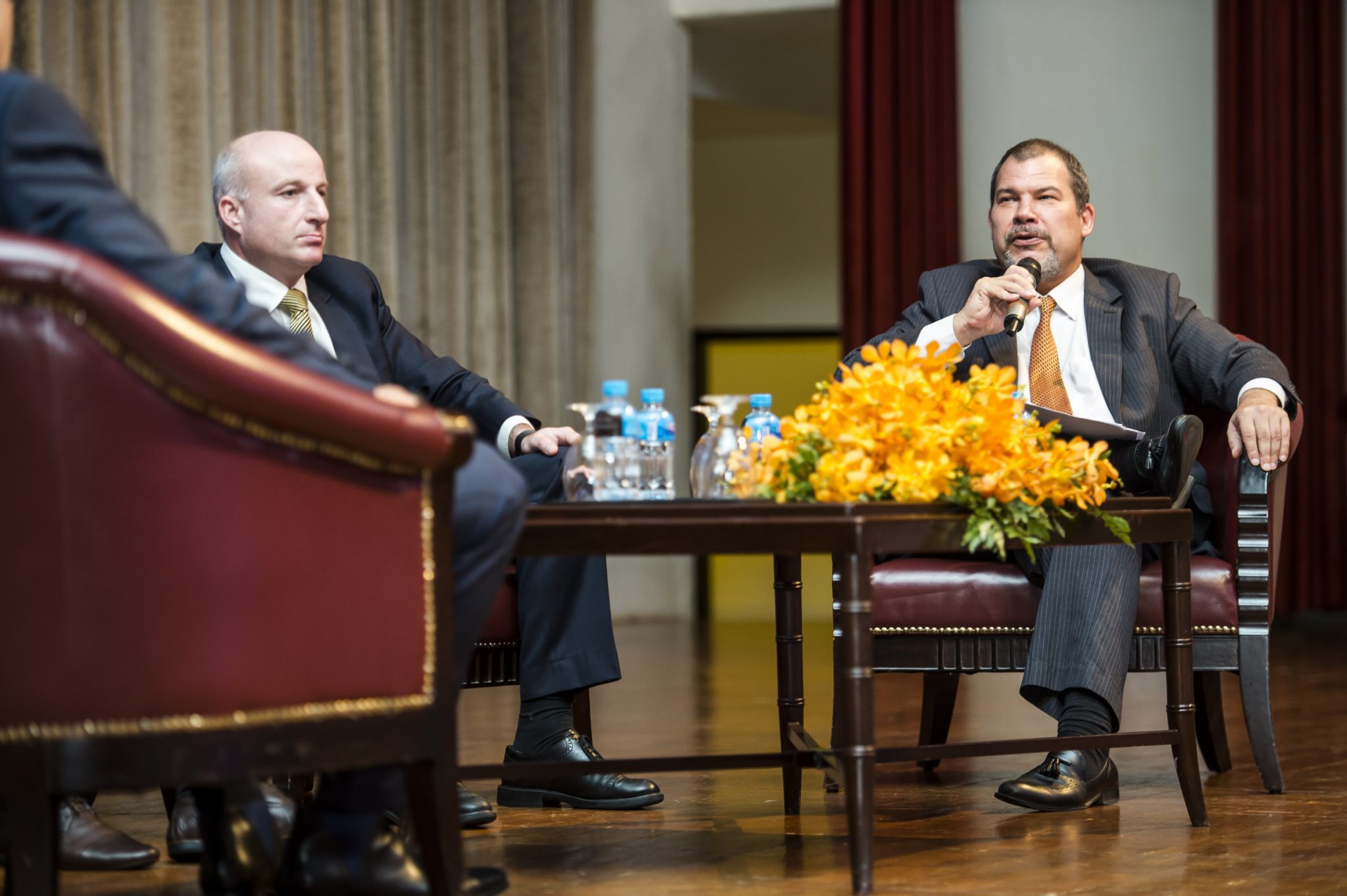For ten hours a day, six days a week, Cambodia’s garment workers assemble shoes and stitch together clothes for the world’s largest brands. They toil away in poorly ventilated factories that regularly exceed 37C, conditions that routinely lead to mass faintings and have drawn the ire of rights groups and labour activists around the world.
Despite the troubling conditions, the country’s 600,000-strong garment workforce has been the main driver of Cambodia’s rapid economic growth since the 1991 Paris Peace Accords paved the way for the country’s reintegration into the global economy. In 1996, garment exports totalled $80m; in 2015, they amounted to $6.8 billion and accounted for nearly two percentage points of the nation’s 7% GDP growth that same year.

But while many of Cambodia’s factories are not too far removed from the British workhouses that powered the first industrial revolution in the 1800s, the Western world has moved on to what has become known as the ‘fourth industrial revolution’, or Industry 4.0. This has been described as the connection of humans, machines, objects and systems via ICT and the internet in a way that drastically improves efficiency and productivity. According to industry insiders at the recent Inspire Asean event, organised by the German Business Group in Cambodia (ADW), such innovation threatens the future of labour-intensive manufacturing across the region.
According to Charles Esterhoy, COO of Worldbridge Special Economic Zone and one of three speakers at the recent event, the country will lose 30% of its garment industry jobs next year unless the government rapidly updates the industrial policy it began to implement in 2015.

“First and foremost, [Cambodia] must realise that low-cost labour and inexpensive land is not the future, will be obsolete and that adapting to a modern, global manufacturing base is not an option, it is a must,” he told Southeast Asia Globe after the event.
Esterhoy highlighted four priority areas for the Cambodian government: transport and logistics; strengthening intellectual property rights regulations; reducing barriers faced by SMEs and startups; and education.
Cambodia’s skills mismatch has been particularly well documented. A 2016 report released by the Asian Development Bank revealed that four out of every ten young Cambodians lacked sufficient education to adequately perform their jobs, a significant shortcoming that the government has begun to address by increasing the education budget from 12% of national spending in 2016 to 18.3% in 2017.
The need to invest in education and skills is not limited to Cambodia. Given that machines are unlikely to completely displace people in the foreseeable future, individuals will be expected to work alongside high-tech machinery, meaning all Asean countries will need to focus on upskilling their workforces in order to get the most out of these “people-machine collaborations”, argued Nikolay Kurnosov, general manager of Bosch Rexroth Vietnam.
Young Cambodians may be better prepared today than a person of the same age in a neighbouring country”
In addition to standardising university education to make it easier for employers to find qualified workers, Kurnosov wrote in an email that “collaboration between education providers and companies” was needed to “establish a link between education and [the] employer’s needs” and increase the number of “job-related skills” among graduates.
“In this context, skilled teachers and instructors are crucial. They have to be prepared and trained in order to transfer expert knowledge to a future skilled workforce,” he said. “The educational systems for technical and vocational education and training (TVET) and universities should be modernised to [increase the] availability of skilled workers.”
While admitting Cambodia and the wider region had a lot of obstacles to overcome to remain economically competitive in the wake of blistering technological change, Esterhoy remained upbeat about the Kingdom’s future. A favourable business climate, stable economic base and a young, tech-savvy population means it is well placed to leapfrog the third industrial revolution and find its feet in the new world of machine learning and automation, he said.
“Young Cambodians may be better prepared today than a person of the same age in a neighbouring country,” he said, “A clear purpose, employment destination and a logical plan may be all that is needed.”
However, the consensus among the experts at the end was that the gradual return of global brands to Western markets will hasten in the years to come if the region fails to adequately upskill its workforce.
Perhaps the loss of such jobs, which some deem overly exploitative, would be a welcome development for the region’s economies in the long-term. But, according to Kurnosov, one thing is certain: “Industry 4.0 is coming.”


